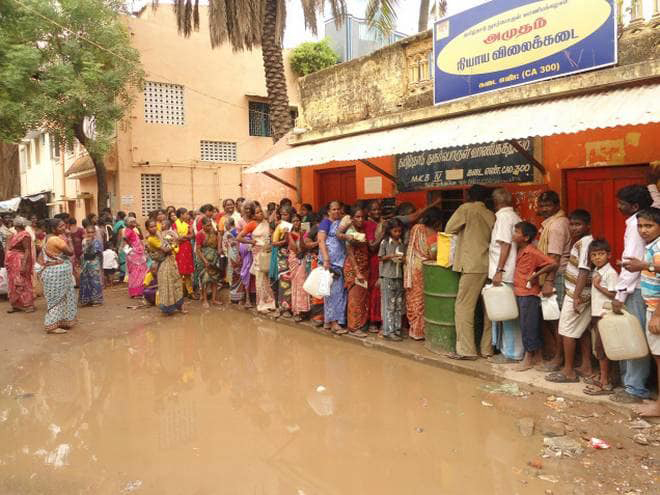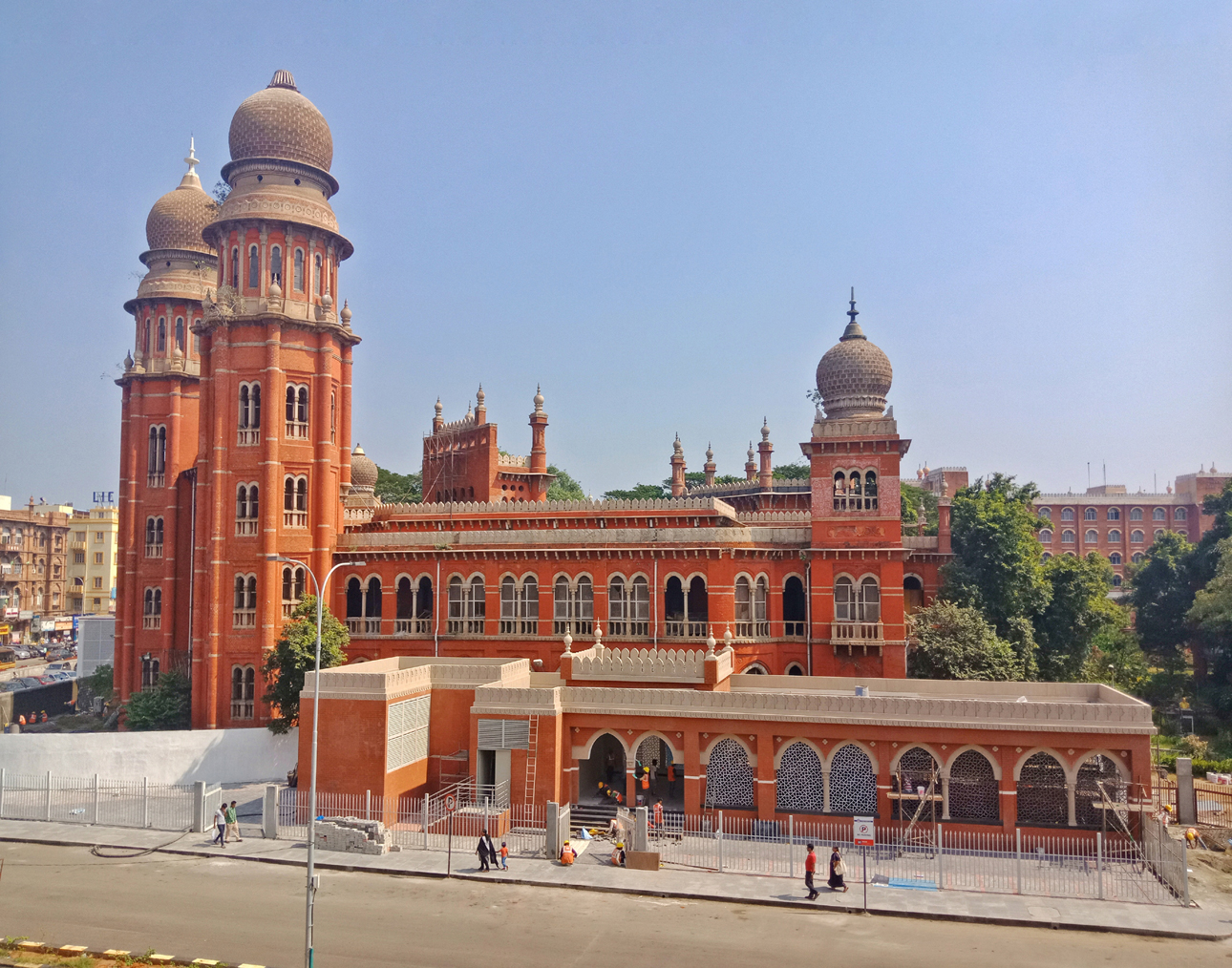Registered with the Registrar of Newspapers for India under R.N.I 53640/91
Vol. XXVIII No. 19, January 16-31, 2019
Archives: Vol. XXVIII No. 19, January 16-31, 2019
Our State of Freebies
By The Editor
 Crowding for freebies at a ration shop.
Crowding for freebies at a ration shop.There was a time when Tamil Nadu was defined by a strong work ethic. This was what put the State in the forefront when it came to industrialisation and, later, the IT revolution. Now no longer. The lack of skills development is partially to blame for this. But what is worse is the culture of freebies that has come to stay. Each successive Government outdoes its predecessor when it comes to handing out unwarranted gifts to the people, thereby destroying all motivation to earn. The latest under this head is a cash gift of Rs. 1,000, apart from a hamper with several commodities, to all ration-card holders in the State. This bonanza will load the exchequer with a further burden of Rs. 2,000 crore.
Those who are concerned about the State’s economic performance are aghast at this decision. Even last year, the State’s finances were classified as precarious – the gross fiscal deficit had trebled over a decade from 2007/08 to three per cent of the gross state domestic product (GDSP). Interest payments have climbed to 13.8 per cent of revenue receipts, up from 7.8 per cent a decade earlier. Both these indices are not in keeping with the norms stipulated by the 14th Finance Commission, which pegs an upper limit of three per cent for fiscal deficit and ten per cent for interest. That all of this is accompanied by a decline in capital expenditure (2.5 per cent of GDSP as compared to 3.6 in 2007/8) shows that less money is available for infrastructure and much of it is being spent otherwise. This year, the budget deficit was planned at Rs 17,500 crores. With this new expense, it will go up to Rs 20,000 crore, assuming the rest of the expenses remain under control.
Poverty reduction – how fare we?
by A Special Correspondent
Poverty is generally identified by income level. Another way of adjudging poverty is by the degree of deprivation of basic public facilities and services that make for a life of dignity. Income test is not enough because there could be income above poverty line but with basic facilities still absent or inaccessible to such segments. It would be interesting to see where Tamil Nadu stands in containing deprivation.
The measurement of deprivation has assumed significance since the United Nations proclaimed the Sustainable Development Goals for the world, with the agenda to eradicate poverty in “all its forms and dimensions” by 2030. The results of the new way of studying the incidence of “poverty” is available to policy makers in the form of a Global Multi-Dimensional Poverty Index (MPI) released by the United Nations Development Programme (UNDP) and the Oxford Poverty and Human Development Initiative (OPHI).
Are dosas making us fatter?
Everything, it seems, made us fatter in 2018.
Now, a recent study published in the British Medical Journal, claims that dosas, made of apparently innocuous rice and urad dal batter, are not as healthy as we have always thought and gorged on.
One masala dosa contains 1,023 kcal, which is almost half of the calorie requirement of an individual in a day, the study says.
So, if you eat two masala dosas, you are done for the day.
What? Hold my coconut chutney, please!
According to a fitness tracker, one masala dosa contains as much as 387 calories. (This figure is also no less shocking!).
Another tracker measures it at 498 calories. Well, we can do some adjustments here and there, but it’s not over 500 calories apparently.
Thank you, Donors
We today, publish donations received with thanks as on date. - The Editor
Rs. 50: M.R. Ananthanarayanan
Rs. 100: R.P. Jesudasan, J.D. Jambunathan, R. Vaidyanathan, M. Balakrishnan, Dr. K.R. Chidambara Kumarasamy, Lakshmi Narayanan
Rs. 200: K.A. Narayanan, R.B. Vatsal, V. Thiruvengadam
Rs. 400: Chubby Raj M.K., Geeta Doctor, C.D.A. Dharanan, L.J. Krishnamoorthi, R. Periaswamy
Rs. 900: K.S. Sethumadhavan, Ashokan Krishnamurti
Rs. 1000: Jaya Krishnaswamy
Rs. 1250: N.S. Parthasarathy
Rs. 1900: L. Joshua Thangaraj, Dadha Pharma Ltd.
Rs. 2500: V. Narayanan

 The Metro has promised heritage-friendly designs for stations by the sides of heritage sites. Above: the station next to Law College and below: the one next to St. George’s School. (Photos by R. Raja Pandiyan.)
The Metro has promised heritage-friendly designs for stations by the sides of heritage sites. Above: the station next to Law College and below: the one next to St. George’s School. (Photos by R. Raja Pandiyan.)
